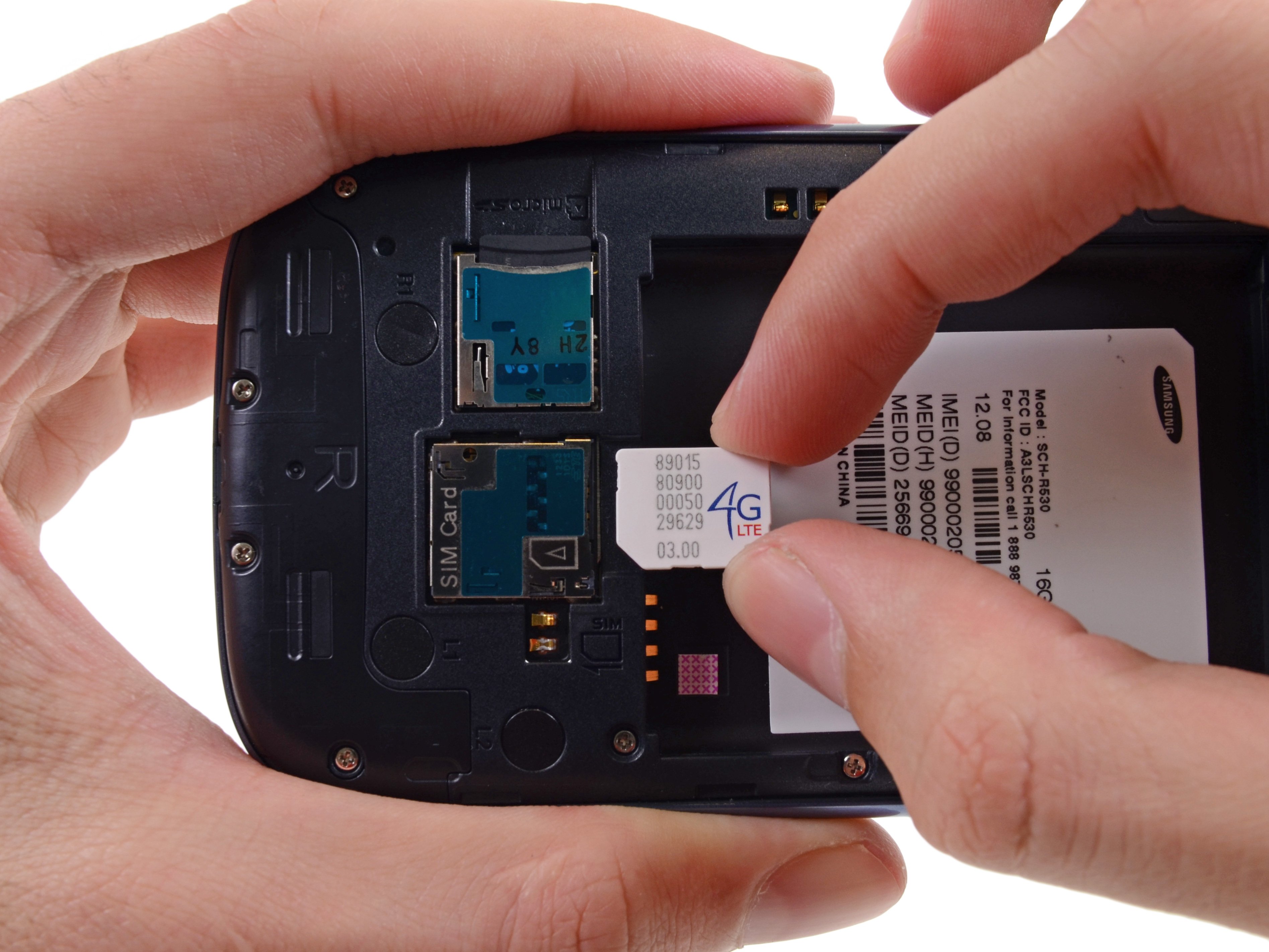Slot 中文

Peripheral Component Interconnect (PCI) is a local computer bus for attaching hardware devices in a computer and is part of the PCI Local Bus standard. The PCI bus supports the functions found on a processor bus but in a standardized format that is independent of any given processor's native bus.
| Type | Slot |
|---|---|
| Chip form factors |
|
| Contacts | 242[1] |
| FSB protocol | AGTL+ |
| FSB frequency | 66, 100, and (on third-party chipsets) 133 MHz |
| Voltage range | 1.3 to 3.50 V |
| Processors | Pentium II: 233–450 MHz Celeron: 266–433 MHz |
| Predecessor | Socket 7 |
| Successor | Socket 370 |
| This article is part of the CPU socket series | |
- Slot的中文意思: slɔt 短语和例子slot1n.1.狭缝,窄孔;【机械工程】,查阅slot的详细中文翻译、发音、用法和例句等。.
- 加上Slot這字翻譯過來有投幣口、狹長型凹槽的意思,網路上很多英文直翻的文章也用「插槽」這字眼來稱呼。 历史 编辑 大約在1896年時,一位名叫 查爾斯‧菲 ( 英语 : Charles Fey ) (Charles Fey) 1.
- 隨機存取記憶體(英語: Random Access Memory ,縮寫: RAM ;也叫主記憶體)是與 CPU 直接交換資料的記憶體。 它可以隨時讀寫(重新整理時除外,見下文),而且速度很快,通常作為作業系統或其.
Slot 1 refers to the physical and electrical specification for the connector used by some of Intel's microprocessors, including the Pentium Pro, Celeron, Pentium II and the Pentium III. Both single and dual processor configurations were implemented.
Intel switched back to the traditional socket interface with Socket 370 in 1999.
General[edit]
With the introduction of the Pentium II CPU, the need for greater access for testing had made the transition from socket to slot necessary. Previously with the Pentium Pro, Intel had combined processor and cache dies in the same Socket 8 package. These were connected by a full-speed bus, resulting in significant performance benefits. Unfortunately, this method required that the two components be bonded together early in the production process, before testing was possible. As a result, a single, tiny flaw in either die made it necessary to discard the entire assembly, causing low production yield and high cost.[citation needed]
Intel subsequently designed a circuit board where the CPU and cache remained closely integrated, but were mounted on a printed circuit board, called a Single-Edged Contact Cartridge (SECC). The CPU and cache could be tested separately, before final assembly into a package, reducing cost and making the CPU more attractive to markets other than that of high-end servers. These cards could also be easily plugged into a Slot 1, thereby eliminating the chance for pins of a typical CPU to be bent or broken when installing in a socket.
The form factor used for Slot 1 was a 5-inch-long, 242-contact edge connector named SC242. To prevent the cartridge from being inserted the wrong way, the slot was keyed to allow installation in only one direction. The SC242 was later used for AMD's Slot A as well, and while the two slots were identical mechanically, they were electrically incompatible. To discourage Slot A users from trying to install a Slot 1 CPU, the connector was rotated 180 degrees on Slot A motherboards.
With the new Slot 1, Intel added support for symmetric multiprocessing (SMP). A maximum of two Pentium II or Pentium III CPUs can be used in a dual slot motherboard. The Celeron does not have official SMP support.
There are also converter cards, known as Slotkets, which hold a Socket 8 so that a Pentium Pro CPU can be used with Slot 1 motherboards.[2] These specific converters, however, are rare. Another kind of slotket allows using a Socket 370 CPU in a Slot 1. Many of these latter devices are equipped with own voltage regulator modules, in order to supply the new CPU with a lower core voltage, which the motherboard would not otherwise allow.
Form factors[edit]
The Single Edge Contact Cartridge, or 'SECC', was used at the beginning of the Slot 1-era for Pentium II CPUs. Inside the cartridge, the CPU itself is enclosed in a hybrid plastic and metal case. The back of the housing is plastic and has several markings on it: the name, 'Pentium II'; the Intel logo; a hologram; and the model number. The front consists of a black anodized aluminum plate, which is used to hold the CPU cooler. The SECC form is very solid, because the CPU itself is resting safely inside the case. As compared to socket-based CPUs, there are no pins that can be bent, and the CPU is less likely to be damaged by improper installation of a cooler.
Following SECC, the SEPP-form (Single Edge Processor Package) appeared on the market. It was designed for lower-priced Celeron CPUs. This form lacks a case entirely, consisting solely of the printed-circuit board holding the components.
A form factor called SECC2 was used for late Pentium II and Pentium III CPUs for Slot 1, which was created to accommodate the switch to flip chip packaging.[3] Only the front plate was carried over, the coolers were now mounted straight to the PCB and exposed CPU die and are, as such, incompatible with SECC cartridges.
History[edit]
Historically, there are three platforms for the Intel P6-CPUs: Socket 8, Slot 1 and Socket 370.
Slot 1 is a successor to Socket 8. While the Socket 8 CPUs (Pentium Pro) directly had the L2-cache embedded into the CPU, it is located (outside of the core) on a circuit board shared with the core itself. The exception is later Slot 1 CPUs with the Coppermine core which have the L2-Cache embedded into the die.
In the beginning of 2000, while the Pentium-III-CPUs with FC-PGA-housing appeared, Slot 1 was slowly succeeded by Socket 370, after Intel had already offered Socket 370 and Slot 1 at the same time since the beginning of 1999. Socket 370 was initially made for the low-cost Celeron processors, while Slot 1 was thought of as a platform for the expensive Pentium II and early Pentium III models. Cache and core were both embedded into the die.
Slot 1 also obsoleted the old Socket 7, at least regarding Intel, as the standard platform for the home-user. After superseding the Intel P5Pentium MMX CPU, Intel completely left the Socket 7 market.
Chipsets and officially supported CPUs[4][5][edit]
Intel 440FX [6][edit]
- Introduced in: May 6, 1996
- FSB: 66 MHz
- PIO/WDMA
- Supported RAM type: EDO-DRAM
- Supported CPUs:
- Pentium II with 66 MHz FSB
- Celeron (Covington, Mendocino)
- Used in both Socket 8 (Pentium Pro) and Slot 1 (Pentium II, early Celerons)
- Does not support AGP or SDRAM
- Allowed up to two CPUs for SMP
Intel 440LX [7][edit]
- Introduced in: August 27, 1997
- FSB: 66 MHz
- Supported RAM type: EDO-DRAM, SDRAM
- Supported CPUs: Pentium II, Celeron
- AGP 2× Mode
- UDMA/33
- Pentium II with 66 MHz FSB
- Celeron (Covington, Mendocino)
- Introduced support for AGP and SDRAM
- Allowed up to two CPUs for SMP
Intel 440EX [8][edit]
- Introduced in: April, 1998
- FSB: 66 MHz
- Supported RAM type: EDO-DRAM, SDRAM
- Supported CPUs: Pentium II, Celeron
- AGP 2× Mode
- UDMA/33
- Pentium II with 66 MHz FSB
- Celeron (Covington, Mendocino)
- Same specifications as 440LX, but memory support limited to 256MB and no SMP support.
Intel 440BX [9][edit]
- Introduced in: April 1998
- FSB: 66 and 100 MHz (some motherboards supported overclocking to 133 MHz, allowing usage of Socket 370 CPUs using a Slocket)
- AGP 2× Mode (max memory mapping 32 or 64 MB)
- UDMA/33
- Supported RAM types: SDRAM (PC66 and PC100, PC133 with overclocking) up to 4 DIMMs of 256 MB
- Supported CPUs:
- Pentium II with 66 and 100 MHz FSB
- Pentium III with 100 MHz FSB (133 with overclocking)
- Celeron (Covington, Mendocino, Coppermine)
- Allowed up to two CPUs for SMP
Intel 440ZX[edit]
- Introduced in: November 1998
- FSB: 66 and 100 MHz (some motherboards supported overclocking to 133 MHz, allowing usage of Socket 370 CPUs using a Slocket)
- AGP 2× Mode
- UDMA/33
- Supported RAM types: SDRAM (PC66 and PC100, PC133 with overclocking)
- Supported CPUs:
- Pentium II with 66 and 100 MHz FSB
- Pentium III with 100 MHz FSB (133 with overclocking)
- Celeron (Covington, Mendocino, Coppermine)
Intel 820/820E (Camino)[edit]
- Introduced in: November 1999
- FSB: 66, 100, and 133 MHz
- AGP 4× Mode
- UDMA/66 (i820), UDMA/100 (i820E)
- Supported RAM types: RDRAM, SDRAM (PC133)
- Supported CPUs: All Slot 1 CPUs
- Allowed up to two CPUs for SMP
Via Apollo Pro / Pro+[edit]
- Introduced in: May 1998 (Pro Plus: Dec 1998)
- FSB: 66, 100 MHz (some motherboards supported overclocking to 133 MHz, allowing usage of Socket 370 CPUs using a Slocket)
- AGP 2× Mode
- UDMA/33 (VT82C586B/VT82C596A), UDMA/66 (VT82C596B)
- Supported CPUs:
- Pentium Pro with 66 MHz FSB
- Pentium II with 66 and 100 MHz FSB
- Pentium III with 100 MHz FSB (133 with overclocking)
- Celeron (Covington, Mendocino, Coppermine)
Via Apollo Pro 133[edit]
- Introduced in: July 1999
- FSB: 66, 100, and 133 MHz
- AGP 2× Mode
- UDMA/33 (VT82C596A), UDMA/66 (VT82C596B/VT82C686A), UDMA/100 (VT82C686B)
- Supported CPUs: All Slot 1 CPUs
Via Apollo Pro 133A[edit]
- Introduced in: Oct 1999
- FSB: 66, 100, and 133 MHz
- AGP 4× Mode
- UDMA/66 (VT82C596B/VT82C686A), UDMA/100 (VT82C686B)
- Supported CPUs: All Slot 1 CPUs
- Allowed up to two CPUs for SMP
See also[edit]
References[edit]

- ^'CPU Sockets Chart'. erols.com. Retrieved 2009-03-31.
- ^'PPro on a BX?-Usenet Gateway'.
- ^http://www.tomshardware.com/reviews/overclocking-special,94-2.html[dead link]
- ^List of Intel chipsets
- ^List of VIA chipsets
- ^Intel Corporation: 440FX PCIset Datasheet
- ^Intel Corporation: 440LX AGPset Design Guide[permanent dead link]
- ^Intel Corporation: 440EX AGPset Design Guide
- ^Intel Corporation: 440BX AGPset Design GuideArchived 2012-10-04 at the Wayback Machine
External links[edit]
| Wikimedia Commons has media related to Slot 1. |
- Intel's specifications for the SC242 connectors[permanent dead link]
You’re browsing the documentation for v2.x and earlier. For v3.x, click here.
This page assumes you’ve already read the Components Basics. Read that first if you are new to components.
In 2.6.0, we introduced a new unified syntax (the v-slot directive) for named and scoped slots. It replaces the slot and slot-scope attributes, which are now deprecated, but have not been removed and are still documented here. The rationale for introducing the new syntax is described in this RFC.
Slot Content

Vue implements a content distribution API inspired by the Web Components spec draft, using the <slot> element to serve as distribution outlets for content.
This allows you to compose components like this:
Then in the template for <navigation-link>, you might have:
When the component renders, <slot></slot> will be replaced by “Your Profile”. Slots can contain any template code, including HTML:
Or even other components:
If <navigation-link>‘s template did not contain a <slot> element, any content provided between its opening and closing tag would be discarded.
Compilation Scope
When you want to use data inside a slot, such as in:
That slot has access to the same instance properties (i.e. the same “scope”) as the rest of the template. The slot does not have access to <navigation-link>‘s scope. For example, trying to access url would not work:
As a rule, remember that:
Everything in the parent template is compiled in parent scope; everything in the child template is compiled in the child scope.
Fallback Content
There are cases when it’s useful to specify fallback (i.e. default) content for a slot, to be rendered only when no content is provided. For example, in a <submit-button> component:
We might want the text “Submit” to be rendered inside the <button> most of the time. To make “Submit” the fallback content, we can place it in between the <slot> tags:
Now when we use <submit-button> in a parent component, providing no content for the slot:

will render the fallback content, “Submit”:
But if we provide content:
Then the provided content will be rendered instead:
Named Slots
Updated in 2.6.0+. See here for the deprecated syntax using the slot attribute.
There are times when it’s useful to have multiple slots. For example, in a <base-layout> component with the following template:
For these cases, the <slot> element has a special attribute, name, which can be used to define additional slots:
A <slot> outlet without name implicitly has the name “default”.
To provide content to named slots, we can use the v-slot directive on a <template>, providing the name of the slot as v-slot‘s argument:
Now everything inside the <template> elements will be passed to the corresponding slots. Any content not wrapped in a <template> using v-slot is assumed to be for the default slot.
However, you can still wrap default slot content in a <template> if you wish to be explicit:
Either way, the rendered HTML will be:
Note that v-slot can only be added to a <template> (with one exception), unlike the deprecated slot attribute.
Scoped Slots
Updated in 2.6.0+. See here for the deprecated syntax using the slot-scope attribute.
Sometimes, it’s useful for slot content to have access to data only available in the child component. For example, imagine a <current-user> component with the following template:
We might want to replace this fallback content to display the user’s first name, instead of last, like this:
That won’t work, however, because only the <current-user> component has access to the user and the content we’re providing is rendered in the parent.
To make user available to the slot content in the parent, we can bind user as an attribute to the <slot> element:
Attributes bound to a <slot> element are called slot props. Now, in the parent scope, we can use v-slot with a value to define a name for the slot props we’ve been provided:
In this example, we’ve chosen to name the object containing all our slot props slotProps, but you can use any name you like.

Abbreviated Syntax for Lone Default Slots
In cases like above, when only the default slot is provided content, the component’s tags can be used as the slot’s template. This allows us to use v-slot directly on the component:
This can be shortened even further. Just as non-specified content is assumed to be for the default slot, v-slot without an argument is assumed to refer to the default slot:
Note that the abbreviated syntax for default slot cannot be mixed with named slots, as it would lead to scope ambiguity:
Whenever there are multiple slots, use the full <template> based syntax for all slots:
Destructuring Slot Props
Internally, scoped slots work by wrapping your slot content in a function passed a single argument:
That means the value of v-slot can actually accept any valid JavaScript expression that can appear in the argument position of a function definition. So in supported environments (single-file components or modern browsers), you can also use ES2015 destructuring to pull out specific slot props, like so:
This can make the template much cleaner, especially when the slot provides many props. It also opens other possibilities, such as renaming props, e.g. user to person:
You can even define fallbacks, to be used in case a slot prop is undefined:
Slot 中文
Dynamic Slot Names
New in 2.6.0+
Dynamic directive arguments also work on v-slot, allowing the definition of dynamic slot names:
Named Slots Shorthand
New in 2.6.0+
Similar to v-on and v-bind, v-slot also has a shorthand, replacing everything before the argument (v-slot:) with the special symbol #. For example, v-slot:header can be rewritten as #header:
However, just as with other directives, the shorthand is only available when an argument is provided. That means the following syntax is invalid:
Time Slot 中文
Instead, you must always specify the name of the slot if you wish to use the shorthand:
Other Examples
Slot props allow us to turn slots into reusable templates that can render different content based on input props. This is most useful when you are designing a reusable component that encapsulates data logic while allowing the consuming parent component to customize part of its layout.
For example, we are implementing a <todo-list> component that contains the layout and filtering logic for a list:
Instead of hard-coding the content for each todo, we can let the parent component take control by making every todo a slot, then binding todo as a slot prop:
Now when we use the <todo-list> component, we can optionally define an alternative <template> for todo items, but with access to data from the child:
However, even this barely scratches the surface of what scoped slots are capable of. For real-life, powerful examples of scoped slot usage, we recommend browsing libraries such as Vue Virtual Scroller, Vue Promised, and Portal Vue.
Deprecated Syntax
The v-slot directive was introduced in Vue 2.6.0, offering an improved, alternative API to the still-supported slot and slot-scope attributes. The full rationale for introducing v-slot is described in this RFC. The slot and slot-scope attributes will continue to be supported in all future 2.x releases, but are officially deprecated and will eventually be removed in Vue 3.
Named Slots with the slot Attribute
Deprecated in 2.6.0+. See here for the new, recommended syntax.
To pass content to named slots from the parent, use the special slot attribute on <template> (using the <base-layout> component described here as example):
Or, the slot attribute can also be used directly on a normal element:
Slot中文翻译
There can still be one unnamed slot, which is the default slot that serves as a catch-all for any unmatched content. In both examples above, the rendered HTML would be:
Scoped Slots with the slot-scope Attribute
Deprecated in 2.6.0+. See here for the new, recommended syntax.
To receive props passed to a slot, the parent component can use <template> with the slot-scope attribute (using the <slot-example> described here as example):
Here, slot-scope declares the received props object as the slotProps variable, and makes it available inside the <template> scope. You can name slotProps anything you like similar to naming function arguments in JavaScript.
Here slot='default' can be omitted as it is implied:
The slot-scope attribute can also be used directly on a non-<template> element (including components):
The value of slot-scope can accept any valid JavaScript expression that can appear in the argument position of a function definition. This means in supported environments (single-file components or modern browsers) you can also use ES2015 destructuring in the expression, like so:
Using the <todo-list> described here as an example, here’s the equivalent usage using slot-scope: